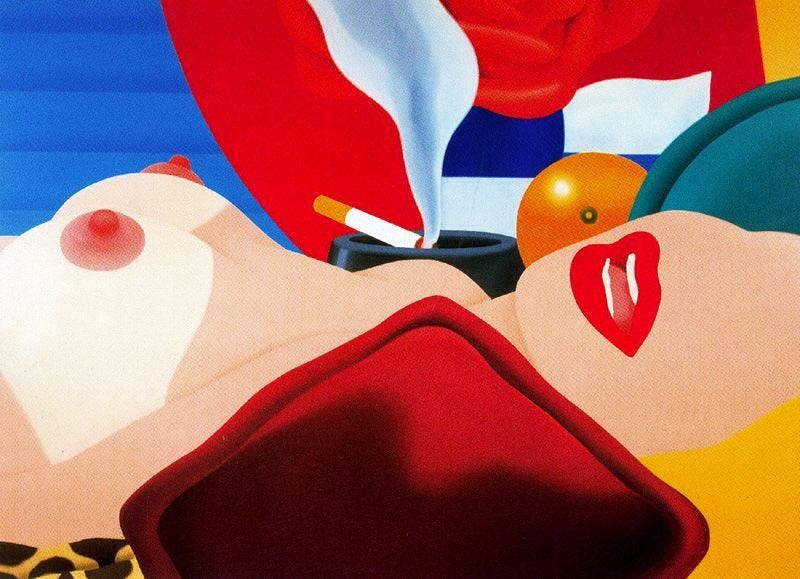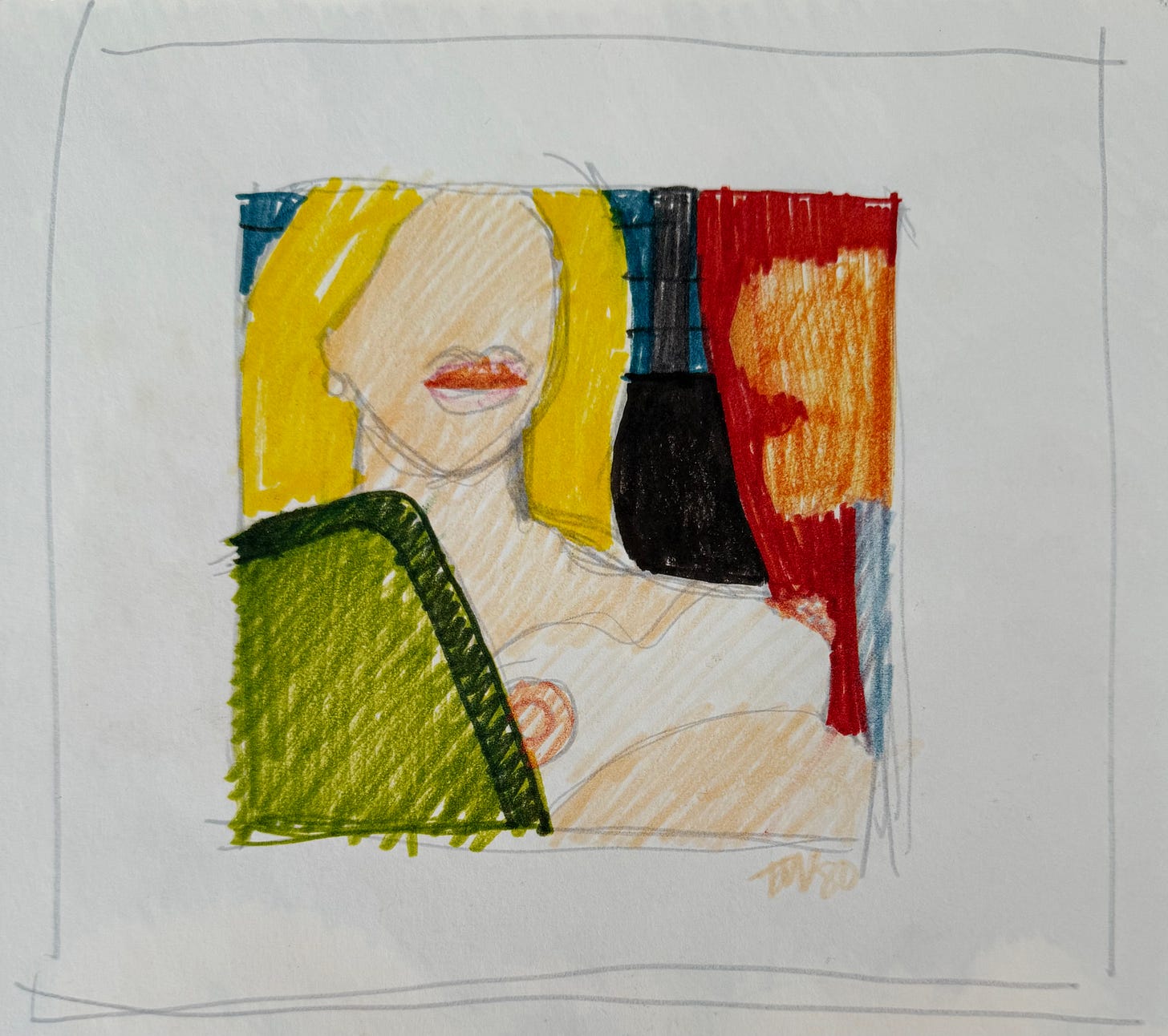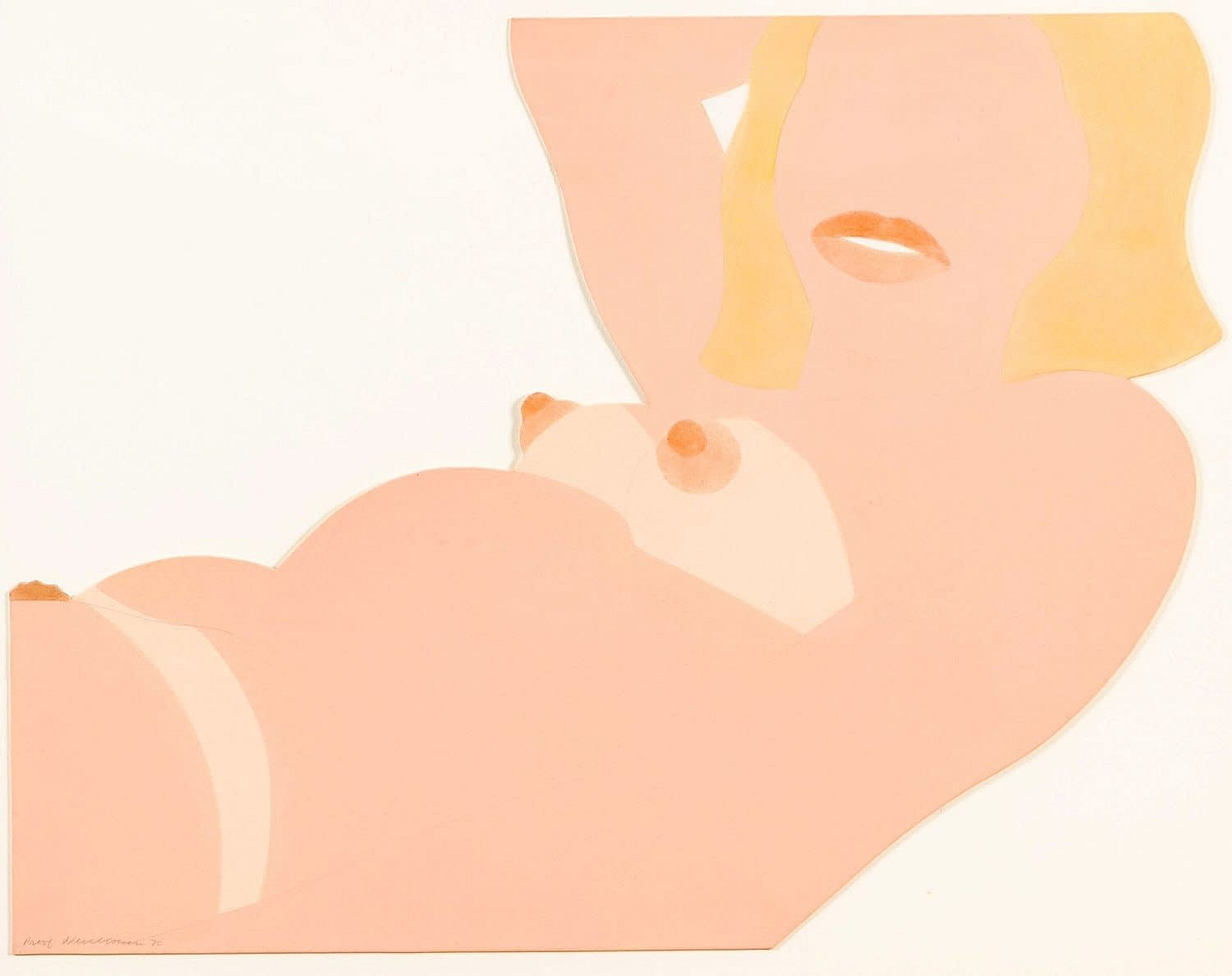Tom Wesselmann’s Nude Studies: A Cornerstone of Pop Art Innovation
A Look Inside Tom Wesselmann's Nude Studies
Weekly writing about the art market and the convergence of art and technology. By day, I’m a partner at the Robert Fontaine Gallery and a data science consultant. By night, I write Artxiom, ideas at the intersection of art, technology, and finance.
If you haven’t subscribed, join today by subscribing here:
Tom Wesselmann’s Nude Studies: A Cornerstone of Pop Art Innovation
Tom Wesselmann (1931–2004), a pivotal figure in the American Pop Art movement, is renowned for his bold, vibrant depictions of the female nude, most notably through his iconic Great American Nude series. His nude studies, spanning paintings, drawings, collages, prints, and sculptures, are central to his oeuvre, reimagining the classical nude through a Pop Art lens that merges consumer culture, graphic design, and modernist influences.
Wesselmann’s fascination with the nude emerged during his studies at Cooper Union in New York (1956–1959), where he initially explored Abstract Expressionism before pivoting to figurative art. Influenced by his teacher Nicholas Marsicano, who emphasized drawing from life, Wesselmann began producing small-scale nude studies in 1956. These early works, often watercolor or ink sketches, were introspective and experimental, reflecting the artist’s struggle to reconcile his love for modernist masters like Henri Matisse with the burgeoning Pop Art movement.
By 1960, Wesselmann’s exposure to Jasper Johns’ Target with Four Faces and Robert Rauschenberg’s combines inspired a shift toward incorporating found materials and everyday imagery. He sought to create a distinctly American take on the nude, departing from European traditions, by drawing on advertising, pin-up culture, and patriotic symbolism. This vision crystallized in 1961 with the launch of the Great American Nude series, which became his most celebrated body of work.
The Great American Nude Series
The Great American Nude series, spanning 1961 to 1973, comprises 100 numbered works, primarily paintings and collages, though it also includes drawings, prints, and preparatory studies. These works redefined the nude as a Pop Art subject, blending sensuality with irony and cultural critique.
Wesselmann’s nudes are characterized by their bold, simplified forms, vibrant colors (often red, white, and blue), and anonymous, idealized female figures. Unlike the introspective nudes of Matisse or the mythological figures of classical art, Wesselmann’s nudes are rooted in consumer culture, evoking pin-up girls, magazine ads, and Hollywood glamour.
Influence and Significance
Wesselmann’s nude studies draw heavily on art-historical precedents while asserting a Pop Art identity:
Henri Matisse: Wesselmann admired Matisse’s use of color, line, and the reclining nude, evident in his fluid contours and decorative backgrounds. The 2023 Musée Matisse exhibition Tom Wesselmann: After Matisse explored this dialogue, highlighting works like Great American Nude No. 10 (1961) alongside Matisse’s odalisques.
Willem de Kooning: Wesselmann’s early abstract nudes echo de Kooning’s gestural figures, though he later stripped away expressionism for Pop clarity.
Advertising and Pop Culture: By appropriating pin-up imagery and billboard aesthetics, Wesselmann aligned with Pop Art’s critique of mass media, though his nudes retain a classical reverence absent in Warhol’s ironic detachment.
The significance of Wesselmann’s nude studies lies in the fusion of fine art and comercial art. It elevates the nude into a commentary on American identity, consumerism, and modernity. Unlike Lichtenstein’s comic-strip women or Warhol’s celebrity portraits, Wesselmann’s nudes are both timeless and topical, balancing sensuality with intellectual rigor. His refusal to depict specific individuals, as he noted, “I don’t want to make portraits,” underscores his aim to create universal, archetypal images.
Critical Reception and Legacy
Wesselmann’s nude studies have elicited varied responses. Critics initially debated their eroticism, with some viewing them as objectifying, though Wesselmann insisted they were “not about sex” but about formal beauty and cultural reflection. Feminist readings have since recontextualized his nudes as empowering, celebrating female form without narrative subjugation.
Wesselmann’s nude studies remain his most enduring legacy, influencing contemporary artists like Derrick Adams and Mickalene Thomas. Their presence in collections at MoMA, the Whitney (Fig. 6), and the Art Institute of Chicago underscores their institutional weight.

Conclusion
Tom Wesselmann’s nude studies, epitomized by the Great American Nude series, are a defining achievement in Pop Art. By reimagining the nude through the lens of consumer culture, patriotic symbolism, and modernist influences, Wesselmann crafted a universal yet distinctly American iconography. His technical versatility amplifies the nudes’ appeal, making them both art-historically significant and commercially potent. In the art market, these works drive Wesselmann’s value, with top paintings fetching millions, and prints and drawings offering stable investment returns. As exhibitions and scholarly projects continue to elevate his profile, Wesselmann’s nude studies stand as a testament to his innovative spirit, ensuring their place at the forefront of Pop Art’s enduring legacy.
Available Works from Tom Wesselmann’s Nude Studies:
Tom Wesselmann
Quick Nude Torso & Landscape Drawing (double sided drawing)
Colored marker on paper
Initialed and dated '80, lower right
12 x 11 inches (Nude Torso)
11 x 14 inches (Landscape Drawing)
1980
Provenance:
-Gift of the Artist
Tom Wesselmann Inventory Number D8052
Note: Wesselmann’s preparatory drawings, often in pencil, ink, or watercolor, reveal his process of simplifying forms. Works show fluid lines and Matisse-like contours, later distilled into the final paintings’ stark outlines.
For more information about this work, inquire below:
Tom Wesselmann
Great American Nude Cut-Out, 1970
Thinned liquitex and pencil in colors on die-cut rag museum board
16 x 20 inches
Edition of 100
Signed and Dated
1970
Note: Screenprints and lithographs, such as Great American Nude Cut-Out (1970), made his nudes accessible, with editions selling for $5,000–$50,000 in 2025 auctions. These prints retain the vibrancy and composition of his paintings.
For more information about this work, inquire below:
Thanks for reading! Subscribe here to receive Artxiom in your inbox each week:









